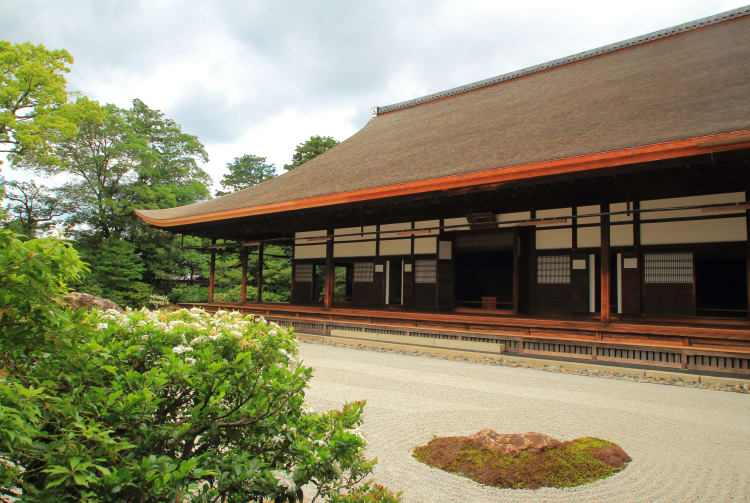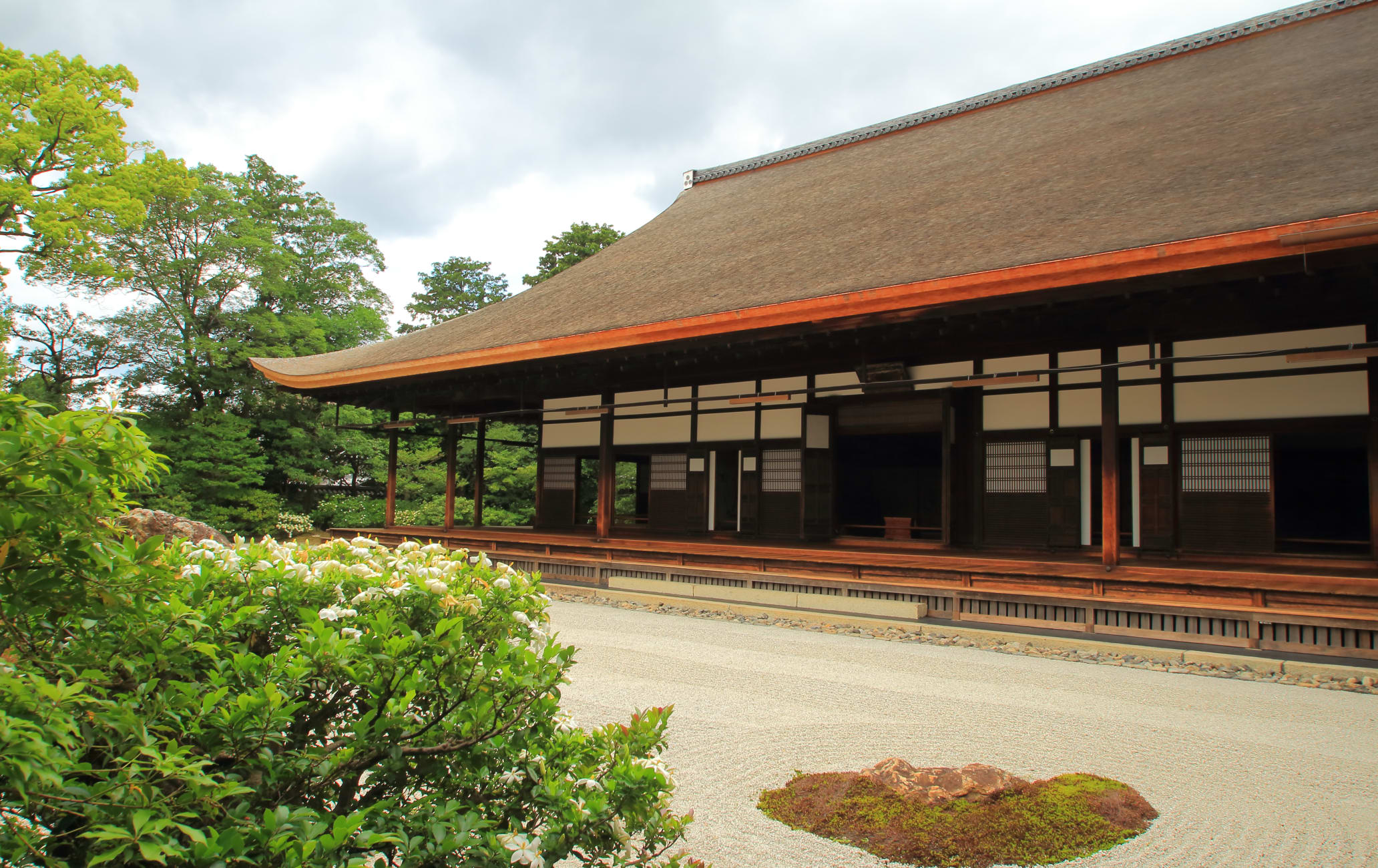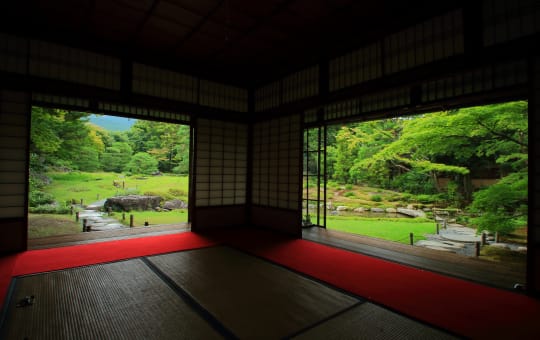Kenninji brims with masterpieces of Japanese art and design
Very close to the bustle of Hanamikoji and Shijo streets, the grounds of Kenninji Temple are expansive and pleasant to walk, and the two karesansui (dry landscape gardens) here offer the visitor an oasis of tranquility. It is thought to be the oldest Zen temple in Kyoto.
Don't Miss
- The golden folding screen of Wind and Thunder gods
- The tea jar procession every May
- The dry landscape garden based on a conceptualization of the universe
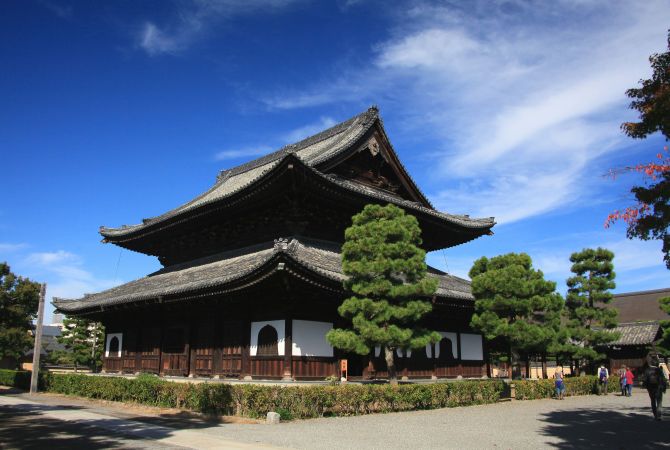


How to Get There
Travel by train and bus from Kyoto Station to reach the temple.
From Kyoto Station you can take a number of buses, including no. 100, 12, 46, 202, 206, and 207 to Gion.
The nearest subway station is Gion-Shijo on the Keihan subway line. Wander along Shijo Street eastwards until you reach Hanamikoji Street, which is hard to miss with the bright red teahouse on the corner. Go straight down Hanamikoji Street to Kenninji, located just beyond the theater.
A peaceful setting away from the bustle of downtown Kyoto
While Kenninji's site dates to the 13th century, there are few remnants from this period. The original temple buildings, like much of Kyoto, were destroyed by fire.
One of the oldest structures here is the Yatate-mon, or Arrow Gate, which is so named because it bears the scars of the Onin War (1467-77) that burned most of Kyoto to the ground.
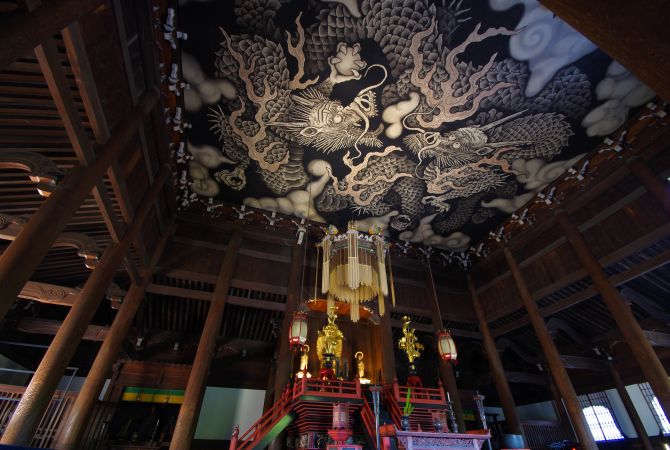

Artistic masterpieces
Kenninji Temple is filled with important works of art and design, including painting, sculpture, and a Zen garden.
One of the most recognizable artworks you can find here is Tawaraya Sotatsu's splendid folding screen of Fujin and Raijin, the Wind God and Thunder God. Though it is a replica, with the original stored away at Kyoto National Museum, it is nonetheless spectacular. The great gods here are depicted on a backdrop of gold leaf.
Don't forget to have a good look at the ceiling when you enter the Main Hall—the mural of twin dragons on the ceiling is a much more recent work but no less impressive.
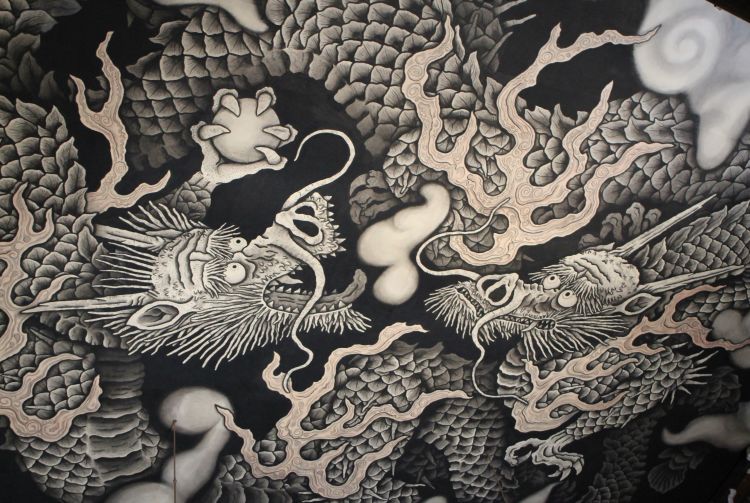
Discover the origins of Zen and tea drinking
Kenninji is inextricably connected to two of Japan's Zen “giants.” Its founder was the monk Eisai, who first introduced Zen Buddhism to Japan, and Dogen, who founded the Soto sect of Zen.
Both men undertook the long, perilous journey to China in the early 1200s, to bring Zen Buddhism to Japan.
Zen Buddhism heavily emphasises meditation or zazen. Zen evolved into much more than simply a philosophy, and came to permeate the arts including the tea ceremony, whose practitioners pursued an imperfect, rustic beauty.
It was quickly patronized by aristocrats and the warrior class, including the ruthless 16th-century shogun Toyotomi Hideyoshi, who commissioned the tea room that you will find on the temple grounds.
The tea jar procession every May alludes to the temple's strong connections to the origins of tea-drinking in Japan.
The story of tea is part and parcel of Kenninji's history, and in fact you will see camellia sinensis (tea) bushes scattered around the temple gardens. Eisai is said to have brought the first tea seeds from China, and these were planted at Uji, a town an hour away from central Kyoto that produces the finest green tea in the country today.
The type of green tea drunk by these early Zen monks was matcha, or powdered green tea, hailed today for its health properties. Tea was in fact not originally just a pleasant beverage, but was consumed for its medicinal potency and for the caffeine high that monks would occasionally need to get through their gruelling meditation sessions.
Every June, the head of the Urasenke School of Tea comes to pay his respects to Eisai by coming to offer a bowl tea to his statue
Zen Design
The dry landscape garden is based upon the monk Sengai's famous circle, square and triangle ink painting. It said to be a conceptualization of the universe.
Plan to spend at least an hour at Kenninji to view the splendid artworks and experience a tranquil moment in the Zen garden.




















































